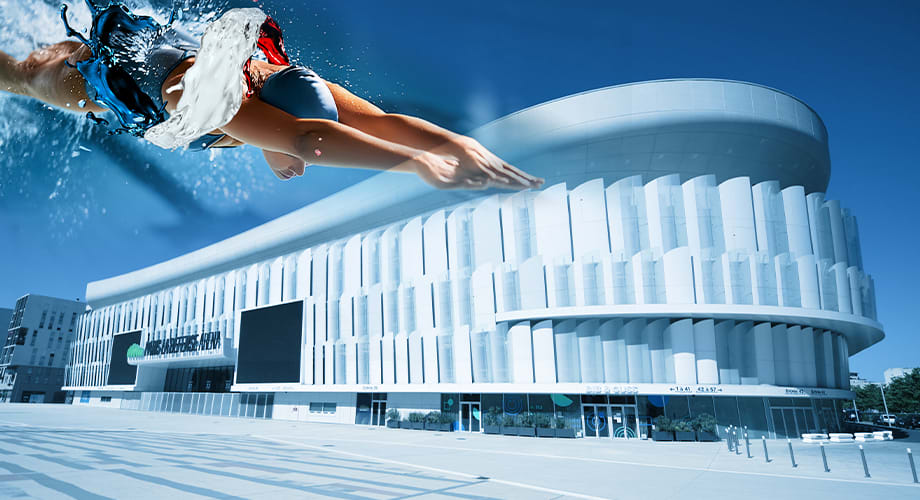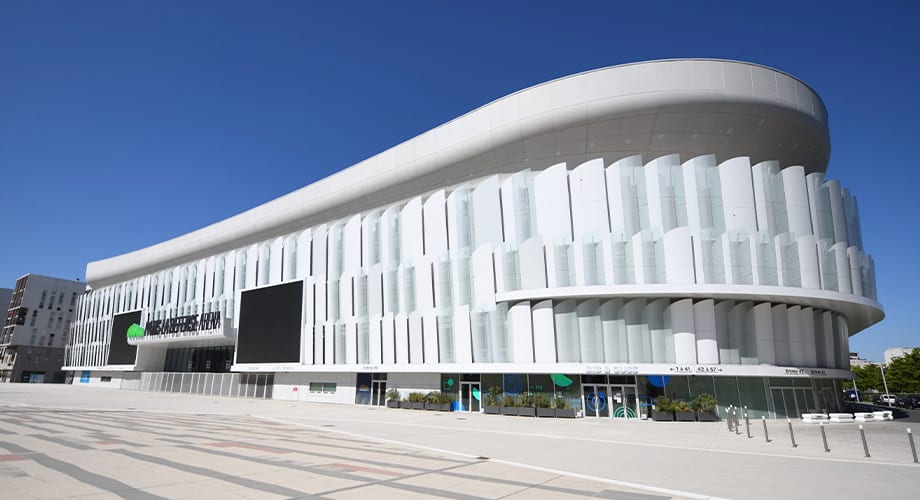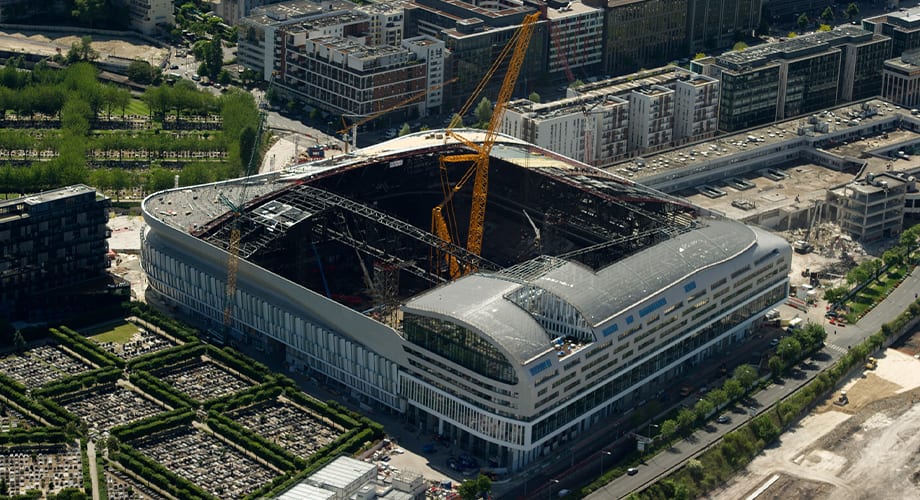La Défense Arena: a unique stadium for culture and sport

The construction of the La Défense Arena represented a real collaborative challenge, offering the city of Paris an intelligent, modular space covering more than 94,000 sqm. Jaillet-Rouby looks back at this monumental project.
About the La Défense Arena
The Paris La Défense Arena, located in the famous La Défense district of Nanterre, is a covered stadium. Its aerial architecture is characterised by a metal framework made up of four large beams, resting on bridge-like supports, on which the roof rests.
Weighing around 6,000 tonnes, the steel structure was installed using a 12-point cable and jacking system. The hoisting operation took 12 hours and lifted the structure 35 metres. With its total flexibility, this space will welcome the world’s best swimmers in the summer of 2024.
La Défense Arena in numbers
- Capacity of 40,000 people for a concert
- 32,000 spectators in stadium configuration
- 6,000 tonnes of steel
- 31,000 sqm of office space

A specialist in building and civil engineering
Jaillet-Rouby, a French engineering and consultancy firm specialising in building and civil engineering, particularly for sports and cultural buildings, was commissioned to design all the steelwork for the project.
"It is one of the largest concert halls built in this way in France. Located in one of the country’s architectural showcases, its construction was shaped by a number of key issues."
Najah Ayoub, Director and partner at Jaillet-Rouby
Identifying BIM requirements
An extraordinary project that rapidly imposed the use of BIM.
- Respect for architectural constraints in terms of the shape of the site and the requirement for a multifunctional enclosure.
- Adapting to the location of the site, in an area that may be prestigious but has limited space.
- Collaboration involving several architects and design offices on a single project.

Project phases
- Opening of the call for projects.
- Delivery of the architectural sketch.
- Predimensioning phase: launch of the first calculations and 3D models of steel structures in Tekla Structures.
- Jaillet-Rouby selected to design all the metal structures for the modular stadium.
- Civil engineering validation of support points on the basis of initial models.
- Delivery of models to MEP and concrete design offices via IFCs and iterations to adjust the models.
- Delivery of revised models to launch the fabrication of steel structures.
- Final assembly checks and final revision of 3D models.
The phasing of the project was determined by a dual challenge; large spans and very heavy structures in keeping with architectural expectations, and the operating, comfort and acoustic constraints of such a non-standard auditorium.
Tekla Structures 3D models made it possible to better manage the breakdown of the structure imposed by the location of the site and the lifting system adopted during the construction phase.

Jaillet-Rouby used Trimble for:
Simplifying the transition to the execution phase
- Allows structures to be created with precision, integrating architectural choices and the various constraints of the project.
- Facilitates the transmission of plans.
Precise monitoring and adaptation
- Optimises monitoring and encourages adaptation throughout the project.
- Guarantees very faithful data to reality.
Improved collaboration
- Provides instant access to the same data for all stakeholders.
- Facilitates information sharing and iterations via IFCs.
A convincing asset
- Helps end-customers to project themselves more easily and supports decision-making.
"When responding to a call for tenders, you need to be convincing from the outset. When customers visualise their work in 3D, they can be sure that the architectural project is viable and that it will be implemented correctly. That’s what makes the difference."
Najah Ayoub, Director and partner at Jaillet-Rouby